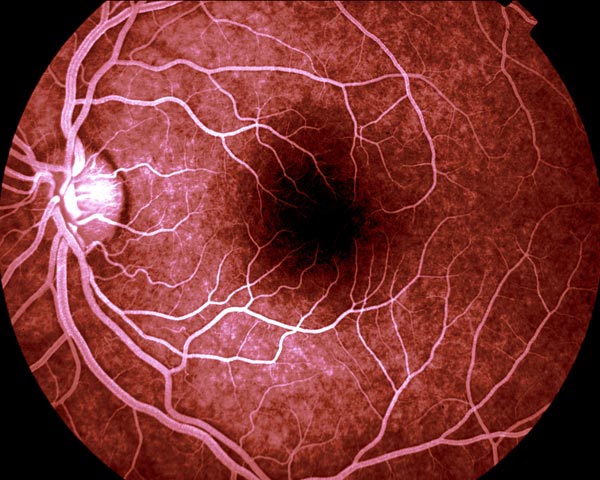In the human body, the arterial bed of the circulatory system operates on the principle of "from large to small." The blood supply to organs and tissues is carried out by the smallest vessels to which blood flows through the medium and large arteries. This type is called trunk, when numerous arterial pools are formed. Collateral circulation is the presence of connecting vessels between the branches of the main arteries. Thus, the arteries of different pools are connected through anastomoses, acting as a backup source of blood supply in case of obstruction or compression of the main feeding branch.
The physiology of collaterals
Collateral circulation refers to the ability to provide uninterrupted power to body tissues due to the plasticity of blood vessels. This is a roundabout (lateral) flow of blood to the cells of organs in case of weakening of blood flow along the main (main) path. Under physiological conditions, it is possible with temporary difficulties in blood supply to the main arteries in the presence of anastomoses and connecting branches between the vessels of neighboring pools.
For example, if in a certain area the artery that feeds the muscle is compressed by some tissue for 2-3 minutes, then the cells will experience ischemia. And if there is a connection of this arterial basin with the neighboring one, then the blood supply to the affected area will be carried out already from another artery by expanding the communicative (anastomosing) branches.
Examples and vascular pathologies
As an example, nutrition of the gastrocnemius muscle, collateral circulation of the femoral artery and its branches should be considered. Normally, the posterior tibial artery with its branches is the main source of its blood supply. But a lot of small branches from neighboring basins from the popliteal and fibular artery also go towards it. In the case of a significant weakening of blood flow along the posterior tibial artery, blood flow will also be carried out through the opened collaterals.

But even this phenomenal mechanism will be ineffective in the pathology associated with damage to the common main artery, from which all other vessels of the lower limb are filled. In particular, with Lerish’s syndrome or a significant atherosclerotic lesion of the femoral artery, the development of collateral circulation does not allow getting rid of intermittent claudication. A similar situation is observed in the heart: with damage to the trunks of both coronary arteries, the collaterals do not help get rid of angina pectoris.
The growth of new collaterals
The collateral in the arterial bed is formed with the laying and development of the arteries and organs that they feed. This happens when the fetus develops in the mother's body. That is, the child is already born with the presence of a system of collateral circulation between the various arterial pools of the body. For example, the Viliziev circle and the blood supply system of his heart are fully formed and ready for functional loads, including those associated with interruptions in the blood supply to the great vessels.
Even in the process of growth and with the appearance of atherosclerotic lesions of arteries at a late age, a system of regional anastomoses is continuously formed, which ensures the development of collateral circulation. In the case of episodic ischemia, each tissue cell, if it experienced oxygen starvation and had to go over to anaerobic oxidation for a while, releases angiogenesis factors into the interstitial space.
Angiogenesis
These specific molecules are, as it were, anchors or tags, in the place of which adventitious cells should develop. A new arterial vessel and a group of capillaries will be formed here, the blood flow through which will ensure the functioning of cells without interruption in blood supply. This means that angiogenesis, that is, the formation of new blood vessels, is an ongoing process designed to meet the needs of functioning tissue or to prevent the development of ischemia.
The physiological role of collaterals
The importance of collateral circulation in the life of the body is the ability to provide backup circulation for parts of the body. This is most valuable in those structures that change their position during movement, which is characteristic of all sections of the musculoskeletal system. Therefore, collateral circulation in the joints and muscles is the only way to ensure their nutrition under conditions of constant changes in their position, which is periodically associated with various deformations of the main arteries.
Since twisting or compression leads to a decrease in the lumen of the arteries, episodic ischemia is possible in the tissues to which they are directed. Collateral circulation, that is, the presence of roundabout ways of supplying tissues with blood and nutrients, eliminates this possibility. Also, collaterals and anastomoses between the pools can increase the functional reserve of the organ, as well as limit the amount of damage in the event of acute obstruction.
Such a safety mechanism of blood supply is characteristic of the heart and brain. In the heart, there are two arterial circles formed by the branches of the coronary arteries, and in the brain - the Vilizium circle. These structures make it possible to limit the loss of living tissue during thrombosis to a minimum instead of half the mass of the myocardium.
In the brain, the Wilizia circle limits the maximum volume of ischemic damage to 1/10 instead of 1/6. Knowing these data, it can be concluded that without collateral circulation, any ischemic episode in the heart or brain caused by thrombosis of a regional or main artery would be guaranteed to lead to death.